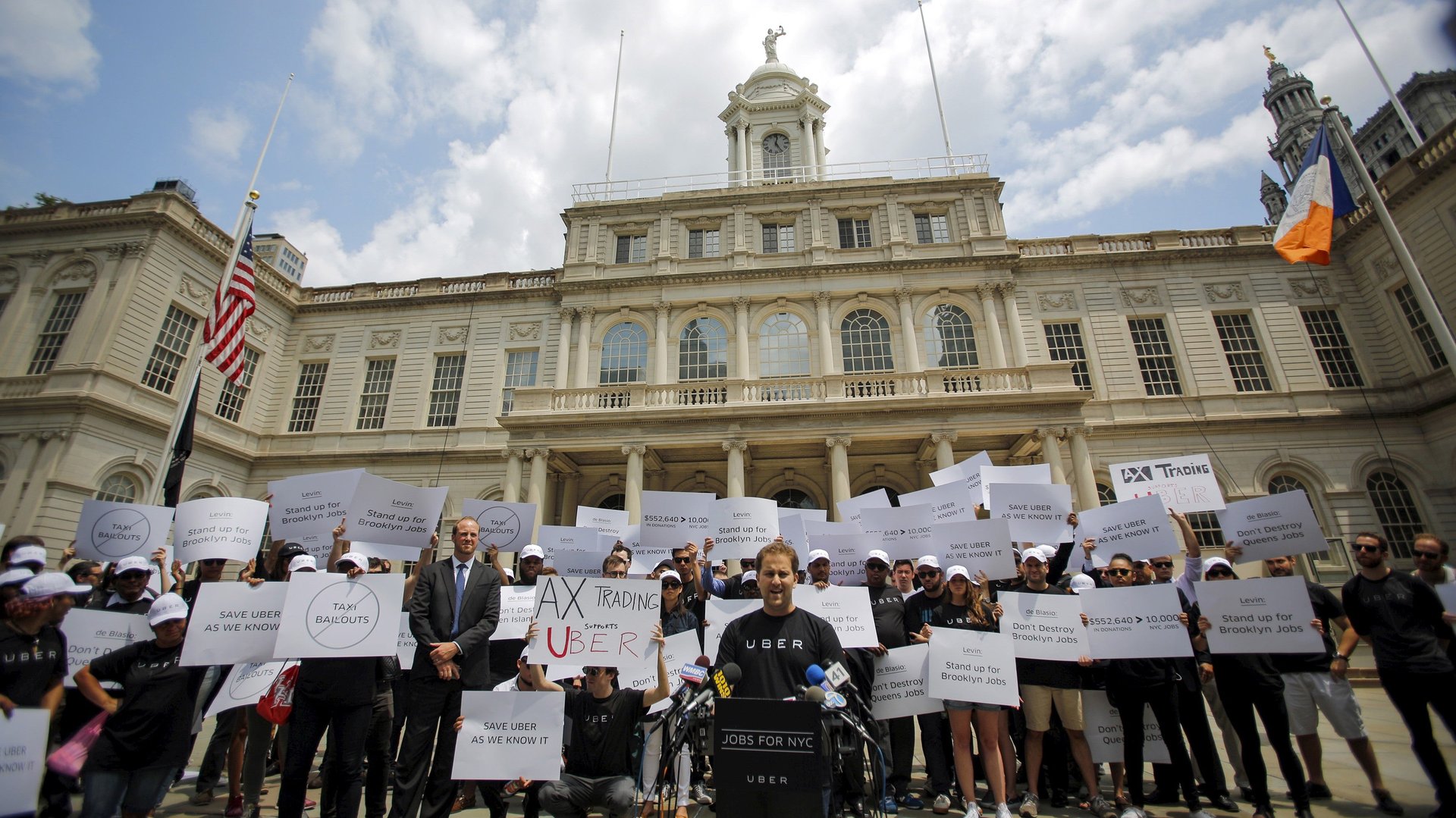Uber wins another huge political victory in New York City
Uber established this summer that it knew how to play New York City politics. But now it’s proven itself a master.


Uber established this summer that it knew how to play New York City politics. But now it’s proven itself a master.
On Friday (Jan. 15), New York City released a much-awaited traffic study, along with proposals to regulate taxis and other commercial vehicles. For Uber and its ride-hailing peers, the results are stunningly good.
First, the study, which concludes a painful chapter in mayor Bill de Blasio’s prolonged battle with Uber. When the city commissioned it for $2 million from McKinsey & Co. in late July, de Blasio and his City Council allies were smarting from a big political loss. Despite their insistence that Uber was significantly worsening congestion in New York, they’d failed to push through a bill that would have capped the company’s growth. Uber emerged triumphant from the brawl. The mayor, in what seemed a last-ditch attempt to save face, settled for a traffic study instead.
So it was embarrassing for the city when that study, initially due out Dec. 1, was repeatedly and inexplicably delayed. It was even more embarrassing when on Thursday the Wall Street Journal reported that the study would likely find Uber and other ride-hailing services hadn’t significantly added to congestion. Which might explain why the final report tries to hedge on this point. “Ride-sharing may have inadvertent, detrimental impacts on congestion,” the section subheading announces. But then: “Ride-sharing could have a substantial impact in reducing vehicle miles traveled … if many consumers change from other car-based modes and few riders switch from public transit.”
That climbdown might also explain why the mayor’s study is taking the backseat to a sprawling set of taxi and for-hire vehicle reforms also announced on Friday (Jan. 15) by New York City Council. The proposals include creating health care options for drivers, increasing pricing transparency for customers, and allowing licensed ride-hailing apps to contract with other car bases and taxi medallion owners. The package as a whole is a dramatic pivot: The city has stopped trying to slow Uber down, and now wants to get everyone else up to speed.
“The Council is proud to take the lead on reforming the taxi and for-hire vehicles in New York City while also ensuring continued innovation and convenience,” speaker Melissa Mark-Viverito says in a statement. “This legislation will work to protect consumers and create more accessibility while improving working conditions for drivers.”
Josh Mohrer, Uber’s general manager for New York, thanked the mayor and city council in a statement for their efforts to improve the city’s commercial car business. “We are supportive of several of the proposals presented today, especially efforts to empower drivers by giving them more freedom to partner with companies across the industry,” Mohrer says. “We will be reviewing the policy ideas and hope to work with the de Blasio administration and the City Council on implementing many of them.”
As with all things, the hangups will be in the details. It’s very unclear, for example, how the council’s proposal to “require the [Taxi and Limousine Commission] to directly administer a health care services program” for drivers will go over with the TLC. It’s similarly uncertain how the council plans to accelerate the TLC’s driver licensing process, which can take weeks or months. Which, again, is why the point seems more about the overall message that the council is trying to send: We are pro-tech; we are pro-innovation. We see certain things have worked for Uber, and we’re ready to bring them to the rest of the industry.
And once again, Uber gets to take a victory lap.